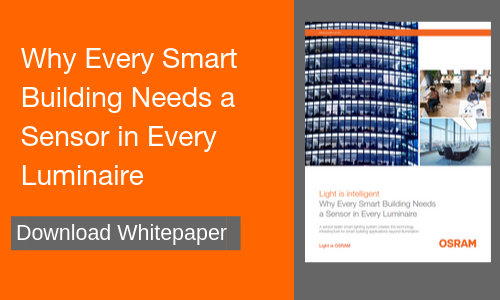Where are we at with Smart Building Adoption?
 Initially, energy savings was the central driver for smart building technology adoption. Substantiating that investment was straightforward and easily backed up. Fast forward a decade, and many building owners and managers now realize the additional benefits of a connected, sensor-laden technology infrastructure that supports building efficiencies, predictive maintenance, physical security, and increased occupant safety, comfort and productivity. Energy savings remain part of the conversation, but it is not the only motivation.
Initially, energy savings was the central driver for smart building technology adoption. Substantiating that investment was straightforward and easily backed up. Fast forward a decade, and many building owners and managers now realize the additional benefits of a connected, sensor-laden technology infrastructure that supports building efficiencies, predictive maintenance, physical security, and increased occupant safety, comfort and productivity. Energy savings remain part of the conversation, but it is not the only motivation.
Technology Infrastructure
A connected lighting system with integrated sensors provides the technology framework for smart building applications that increase energy efficiency, optimize operations, and much more. Data-driven applications such as space optimization, asset tracking, digital wayfinding, and more are helping building owners and managers meet the demand of today’s changing business environment, including the need to reduce costs and provide a competitive edge. IoT data from sensors on a connected lighting system provide the foundation of the smart building value proposition propelling building operations from a reactive to proactive mode, improving cost efficiencies, tenant satisfaction, and safety.
"A major change is starting to happen now, especially in new construction, where the primary driver is changing from cost reduction to features that enhance the user experience and change how users and buildings interact. Instead of there being a single killer-app, we are starting to see a combination of use-cases," said Alan Varghese, senior IoT analyst at Berg Insight.
Smart Building Still in Early Stages
Still, overall, most buildings are not leveraging the advantages of smart building technology. Momentum is growing though, and the commercial real estate market is the front-runner on adoption. Other industries implementing intelligent building solutions include factories, shopping malls, hospitals, academic campuses, stadiums, airports, military bases, and residential buildings.
According to Navigant Research’s State of the Smart Buildings Market report, business disruption for installation/integration was noted as the top barrier real estate executives faced for adopting smart building solutions. However, the results showed that 75% of customers are grappling with other significant barriers--a finding that underscores the confusion in the market and the uncertainty many customers feel about moving forward with smart building solutions.
The Navigant report outlines how the success of smart building technology deployment depends on a specific set of technical and business process changes that require collaboration of information technology (IT) and operational technology (IT). They deduce that IT/OT convergence is the capstone for smart building success and one of the biggest goals for change management in this process of digital transformation. This convergence defines collaboration between leadership and operations teams that have long operated in isolation, and development of seamless technical and domain knowledge across the technology stack from IT networking through building systems.
Future is Bright for Smart Buildings
A 2019 Zion Market Research report on Smart Building Market by Automation Type reveals that the global smart building market in 2019 was valued at approximately $5,800 million and is expected to reach approximately $61,900 million by 2024. The global smart building market is expected to exhibit a CAGR of more than 34% between 2017 and 2024.
Research and Markets report that more than 80% of new constructions incorporate at least one type of IoT or related smart building technology. At this rate, the commercial smart building market is expected to grow nearly tenfold within the next five years to more than $51 billion globally by 2023. The report predicts that North America will lead the IoT smart building movement with a 36% market share by 2023, with especially strong growth in offices, warehouses, hotels, and retail spaces. The report also noted that roughly 90% of legacy buildings in developed economies have issues that will require substantial retrofitting to integrate smart building technologies.
Smart building technology is on a fast trajectory. Moving forward, providing an optimum tenant experience will be a basic requirement for effectively competing in the commercial real estate market.

.png)
